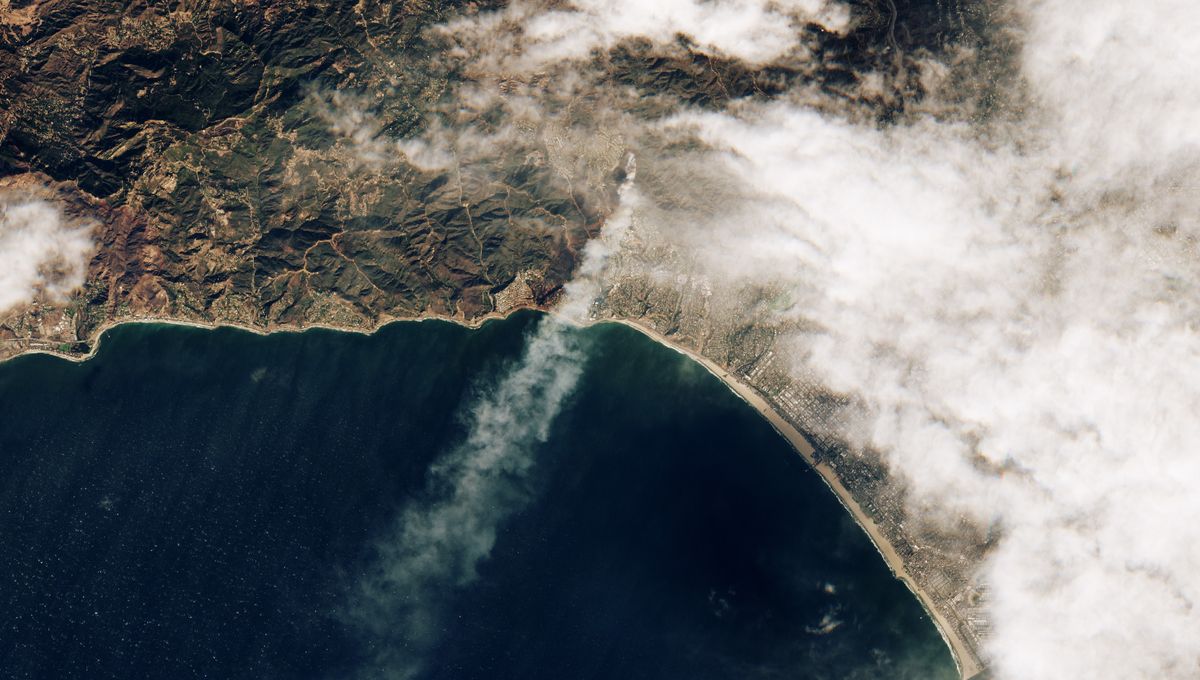
As wildfires continued to rage on the outskirts of Los Angeles and beyond on Wednesday, California Governor Gavin Newsom said in a video posted to social media: “This time of year traditionally has not been fire season but now, we disabuse any notion that there is a season, it’s year-round in the state of California.” It’s a bold statement, but he’s not far wrong – the question is, why has it changed?
Fire season?
Though fires are possible in California throughout the year, historically, they’ve tended to peak in the south of the state between May or June through to October – that’s what’s known as “fire season”.
However, wildfire seasons have been increasing in length – and severity – to the point that they are very nearly year-round, and it’s been estimated that they will continue to grow, which scientists who’ve been studying the matter have attributed to climate change.
It’s not just an issue of increasing temperatures either. As University of California, Los Angeles (UCLA) climate scientist Daniel Swain explained in a recent statement, climate change has been increasing the prevalence of a phenomenon known as hydroclimate whiplash, where weather conditions rapidly swing from intensely wet to dry.
Southern California has seen both recently, with two wet winters in a row followed by a record-breaking, sizzling-hot summer in 2024.
“The evidence shows that hydroclimate whiplash has already increased due to global warming, and further warming will bring about even larger increases,” said Swain, who has also authored a recent study on the prevalence of the phenomenon worldwide.
“This whiplash sequence in California has increased fire risk twofold: first, by greatly increasing the growth of flammable grass and brush in the months leading up to fire season, and then by drying it out to exceptionally high levels with the extreme dryness and warmth that followed.”
Nonetheless, as Sky News climate reporter Victoria Seabrook pointed out, we won’t know straight away the exact degree to which such climate change-related phenomena have contributed to the current fires. That kind of science takes time, and like everyone else, researchers are being evacuated from affected areas too.
An unprecedented blaze
At the time of writing, there are five active fires that have burned into 11,768 hectares (29,080 acres) of land.
On Tuesday (January 8), the director of NASA’s Jet Propulsion Lab, which is found north of Los Angeles near where the Eaton fire is burning, announced that the lab had been temporarily closed.
“No fire damage so far (some wind damage) but it is very close to the lab. Hundreds of JPLers have been evacuated from their homes & many have lost homes,” Laurie Leshin said in the announcement post made on X (Twitter).
Similarly, UCLA has canceled teaching on campus for the rest of the week, and other campus-based activity is being scaled back.
Strong winds and dry conditions are thought to have played a role in the spread of the flames, and are set to continue.
“[On January 9], strong high pressure over parts of the Northern Intermountain Region and Great Basin will set up Santa Ana winds over Southern California. […] Winds of 20 to 40 mph, with stronger winds in the terrain, low relative humidity, and dry fuels have contributed to the dangerous conditions,” said the National Weather Service in a forecast.
Regardless of the causes both immediate and wider, it’s more than possible that the current set of fires could end up being the worst that California has ever seen.
“This is already one of the worst wildfires in California history. Should a large number of additional structures be burned in the coming days, it may become the worst wildfire in modern California history based on the number of structures burned and economic loss,” AccuWeather Chief Meteorologist Jonathan Porter said in a statement emailed to IFLScience.
Porter and colleagues have estimated the damage from the fires could reach between $52 to $57 billion, though that figure could be “revised upward substantially” should the fires continue to spread.
Source Link: California Governor Says State Has No “Fire Season” Anymore, It’s “Year-Round” – Why?